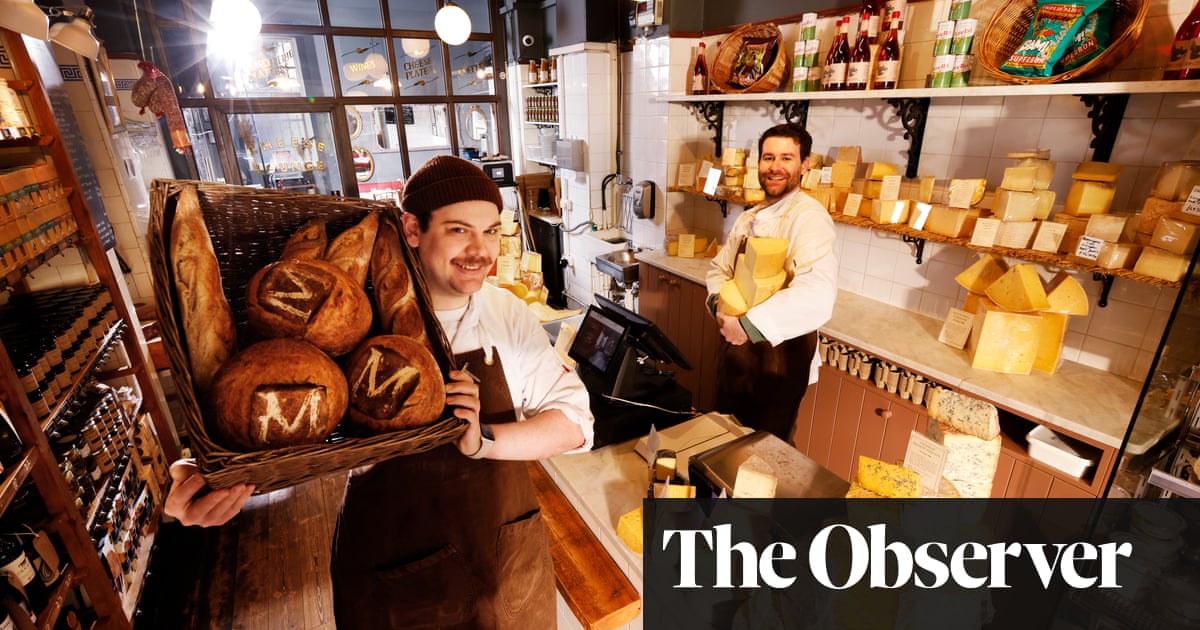
Browsing Derby’s new Museum of Making, my guide ushered me over to her favourite object: a copy of John Flamsteed’s Atlas Coelestis, a fat catalogue of stars, instrumental in fixing longitude. Flamsteed was appointed as the first Astronomer Royal in 1675 and started his astronomical life here in Derby before moving to Greenwich. “What if he’d kept his old calculations? We might have Derby Mean Time!” said the guide.
Though often under the radar, this east Midlands hub has long been a key player in Britain’s technological advancement. The Museum of Making itself is built on the site of what’s widely regarded as the world’s first factory (opened in 1721). Inside now is a trove of eclectic treasures illustrating Derby’s creative legacy, from a seven-tonne Rolls Royce engine to a Midland Railway pen holder – and it’s all very hands on. “It’s like an open storeroom to which we’ve given you the key,” says my guide.
The museum was a fitting finale to my hike along the Derwent – known locally as “the valley that changed the world”. I’d been walking the Derwent Valley Heritage Way, a 55-mile (88km) trail along the river from the southern Peak District, which combines centuries of groundbreaking development with moorland edges, rolling hills and fine drinking establishments. An industrial pilgrimage with benefits.
My journey began near Hathersage, deep in the dales (complete with fluffy sheep) and in the shadow of stunning gritstone escarpment Stanage Edge. It was here that I picked up the River Derwent and had my first intro to innovation, at the David Mellor visitor centre and cutlery factory. Even if you’re unfamiliar with the Sheffield-born designer’s stylish spoons, you’ll know his most influential invention: in the 1960s he redesigned the British traffic light, a model still used today.
But then I was away, following the peaty river, entranced by its changing moods: calm and dark, little white rages, gushing over stones as polished as hand-blown glass. It was already a beautiful day, all mating mallards and green slopes ribboned with drystone walls. Then it went A-list as I entered the matchless Chatsworth Estate. The sprawling grounds here currently feature bonkers sculptures from the Burning Man festival which have been transplanted from the Nevada desert to rural Derbyshire (until 1 October 2022). I took a break to sit by one of the pieces, the 20ft steel head of The Flybrary; it’s quite the contrast to the Duke of Devonshire’s palatial stone pile, with its backdrop of gentle hills.
After a night at the Peacock at Rowsley, I picked up the river again, passing Peak Rail’s steam trains. This heritage line – a fragment of the Midland Railway that once linked Derby and Manchester across the Peak District – heads to Matlock. After I’d been walking in pretty fields, the bustling, cliff-squeezed town was quite a change. I found peace again, though, up on High Tor – the vertiginous Victorian pleasure grounds opened by the grandson of textile industrialist Sir Richard Arkwright and accessed by the cliff ledge path known as Giddy Edge.
On Matlock’s outskirts, I entered Unesco territory: a sign announced the Derwent Valley Mills world heritage site. Thereafter followed a production line of pioneering relics. First, Masson Mills, founded by Sir Richard Arkwright in 1783, closed as a mill in 1991 and finally shuttered, in its reincarnation as a shopping village, in 2020. It was sad to see this red-brick behemoth out of business after almost 250 years of commerce, though the mill’s museum is open.
However, Cromford Mills, a little further on, still thrives. Here, Arkwright constructed the world’s first water-powered cotton mill and a village around it. It’s well maintained, and you can browse the complex’s cheese and antique shops and take a tour of the works, imposing as they are. When disgruntled workers – toiling six days a week, on 12-hour shifts – did attempt to burn down or ransack other mills, no attempts were made on formidable Cromford.
I left via the Cromford Canal. Once clogged with barges shifting stone and timber, its waters are now given over to a patient instructor herding teenagers in canoes. I followed the canal for several miles, past Leawood Pumphouse (occasionally opened for steaming days), and volunteers restoring Aqueduct Cottage – known to have been visited by Florence Nightingale, who once lived nearby. I also passed a man carrying a very long camera lens. “Water voles,” he said. The quiet, shallow canal, now useless for industry, is a refuge for these scarce mammals, apparently – “but I’ve been up since dawn and not seen one yet”.
From water voles, swans and moorhens to canals, railways and roads, nature and manufacture are intertwined here, and lead me to the town of Belper, also a star player of the industrial revolution. Strutt’s North Mill was rebuilt in 1804 using a pioneering fireproof iron frame which became the template for high-rise construction. In essence, the original skyscraper. I was more taken by Long Row, a handsome terrace built for Strutt’s workers along a narrow cobbled road.
The rest of Belper proved equally appealing, and I’m not the first to notice. It’s the only place to have won the Great British High Street award twice, its centre packed with indie shops, cafes and pubs. I chose the Angels Micropub, where the serving of beer is taken very seriously and where I was quickly embraced – within minutes I was drawn into conversations about the Derwent Valley’s microclimate and Derby’s best boozers (the Brunswick Inn, so I was told).
My trail led me to the city the next day, via the river and, eventually, Darley Abbey Mills – the most complete 18th-century mill complex in the world. Here, the old buildings have been zhuzhed up so smartly into bars and cafes I couldn’t help stopping for a drink. In fact, my whole experience of Derby – rarely touted as a short break destination – was a revelation. I entered through the greenery of Darley park, nosed around the Museum of Making, toured the storied cathedral, admired the world-class Joseph Wright room at the Derby Museum and Art Gallery and grazed street-food stands at the monthly Bustler Market.
I finished in as Derbyish a manner as I could, at Derby Pyclets, the former cafe that now offers delivery and collection for baked good devotees. Pyclets have been made here since 1864, owner Katie Gibson told me. “They were originally called poor man’s crumpets – cheaper to make, fluffier and a bit bigger, too, so there’s more room for toppings.” Amen to that. I chose a delicious Welsh rarebit-style pyclet. Other options – presumably unavailable to hard-up consumers in the 19th century – include goat’s cheese and chorizo, and vegan stilton. That’ll be the Derwent getting creative again.










